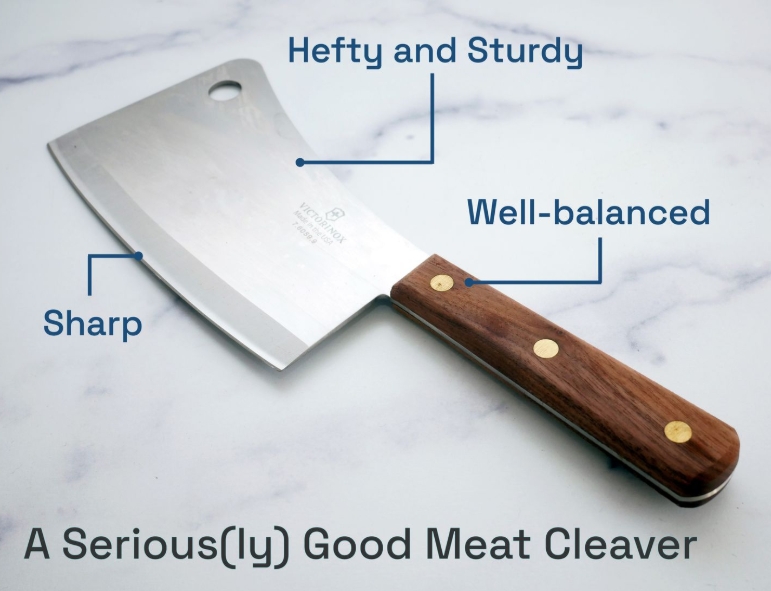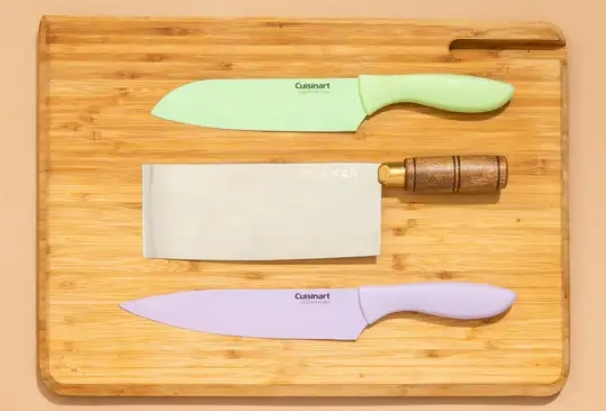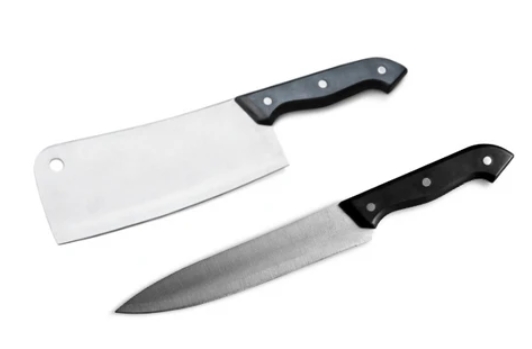

Views: 222 Author: Ella Publish Time: 2025-04-29 Origin: Site








Content Menu
● The Five Most Important Kitchen Knives
>> Chef's Knife
>>> Key Features
>>> When to Use
>> Paring Knife
>>> Key Features
>>> When to Use
>> Bread Knife
>>> Key Features
>>> When to Use
>>> Key Features
>>> When to Use
>>> Key Features
>>> When to Use
● How to Choose Quality Knives
>>> Testing a Knife Before Buying
>>> Materials and Construction
>>> How to Sharpen Your Knives
● Knife Safety Tips for Every Cook
● How to Store Your Knives Properly
● Frequently Asked Questions (FAQ)
>> 1. What is the most versatile kitchen knife?
>> 2. What is the best knife for chopping vegetables?
>> 3. What is the best knife for carving meat?
>> 4. How do I maintain and sharpen my kitchen knives?
>> 5. What is the tang of a knife, and why does it matter?
In every kitchen, knives are the backbone of meal preparation. Whether you're a home cook or a professional chef, having the right set of knives can make cooking more efficient, enjoyable, and safe. But with the overwhelming variety of blades available, which ones are truly essential? This comprehensive guide explores the most important kitchen knives to own, their uses, how to choose them, and tips for care and maintenance. Throughout, you'll find detailed explanations, illustrative images, and helpful videos to enhance your understanding.

A sharp, well-balanced knife is more than a tool-it's an extension of your hand. The right knife allows for precise cuts, improves safety, and makes food preparation more enjoyable. Using the wrong knife for a task can lead to frustration, uneven cuts, and even accidents. Investing in a few high-quality knives is often better than buying a large set of mediocre ones.
Knives are not just about cutting; they are about control, confidence, and creativity in the kitchen. The right knife helps you work faster and more accurately, whether you're slicing ripe tomatoes, mincing garlic, or carving a roast. The wrong knife, on the other hand, can slow you down, damage ingredients, and even cause injury. That's why understanding which knives are essential-and how to use them-is a foundational skill for any cook.
Below are the five knives that form the foundation of any well-equipped kitchen. Each serves a distinct purpose, and together, they cover nearly every cutting task you'll encounter.
The Chef's Knife is the undisputed workhorse of the kitchen. With a blade typically ranging from 8 to 10 inches, its curved edge allows for a rocking motion, making it perfect for chopping, slicing, dicing, and mincing a wide variety of ingredients-from vegetables and herbs to meats and nuts.
- Versatile: Handles 80% of kitchen tasks.
- Comfortable: Well-balanced for prolonged use.
- Blade Shape: Curved for rocking motion.
- Chopping onions, carrots, and celery
- Slicing meats and fish
- Mincing herbs
Grip the handle firmly with your dominant hand, placing your thumb and index finger on either side of the blade for control. Use a rocking motion to chop and dice, keeping the tip of the blade on the cutting board for efficiency and safety.
The Paring Knife is small but mighty, with a blade usually 3 to 4 inches long. It excels at tasks requiring precision and control, such as peeling, trimming, and intricate cutting.
- Compact: Ideal for handheld work.
- Precise: Great for peeling and coring.
- Peeling apples or potatoes
- Deveining shrimp
- Segmenting citrus
Hold the paring knife like a pencil for precision. Use it for delicate tasks where a larger knife would be unwieldy. Its small size makes it perfect for working directly in your hand, rather than on a cutting board.
The Bread Knife features a long, serrated blade that effortlessly slices through crusty loaves without crushing the soft interior. It's also excellent for foods with tough exteriors and soft centers, such as tomatoes and cakes.
- Serrated Edge: Saw-like teeth for tough crusts.
- Long Blade: Typically 8–10 inches.
- Slicing bread and baguettes
- Cutting tomatoes and citrus
- Layering cakes
Use a gentle sawing motion to let the serrations do the work. Avoid pressing down hard, as this can crush delicate foods. The bread knife is also ideal for foods with slippery skins, like melons.
The Utility Knife bridges the gap between the chef's knife and the paring knife, with a blade length of about 5 to 7 inches. It offers more precision than a chef's knife but is larger than a paring knife, making it ideal for medium-sized tasks.
- Mid-Sized: Versatile for various tasks.
- Straight or slightly curved blade.
- Slicing small fruits and vegetables
- Cutting sandwiches
- Trimming fat from meat
Grip the handle firmly and use a slicing motion for foods that are too small for a chef's knife but too large for a paring knife. The utility knife is a great all-rounder for everyday tasks.
The Santoku Knife is a Japanese all-purpose knife, typically 5 to 7 inches long, with a flat edge and a sheepsfoot blade. It excels at chopping, dicing, and mincing, especially for vegetables, fish, and boneless meats.
- Thin, Hard Blade: For precise, clean cuts.
- Fluted Edge: Prevents food from sticking.
- Slicing cucumbers, zucchini, and eggplant
- Dicing onions and peppers
- Mincing herbs
Hold the santoku with a firm grip and use a straight up-and-down chopping motion. The flat blade makes it easy to scoop up chopped ingredients and transfer them to a pan or bowl.

While the above five knives cover most needs, certain specialized knives can be valuable additions:
- Boning Knife: For deboning meat and fish, with a thin, flexible blade.
- Carving Knife: For slicing roasts and large cuts of meat, with a long, narrow blade.
- Nakiri Knife: A Japanese vegetable knife, ideal for precise vegetable cuts.
- Fillet Knife: For filleting fish, with a flexible, thin blade.
When selecting kitchen knives, consider the following factors:
- Blade Material: High-carbon stainless steel is durable and resists rust.
- Handle Comfort: Choose a handle that fits your grip and feels balanced.
- Tang: Full-tang knives (where the blade extends through the handle) offer better balance and durability.
- Weight and Balance: Test different knives to find one that feels right in your hand.
- Maintenance: Some knives require more frequent sharpening; consider your willingness to maintain them.
If possible, hold the knife in your hand before purchasing. It should feel comfortable and balanced, with a handle that fits your grip. The knife should not feel too heavy or too light, as this can affect your control and precision.
The best kitchen knives are made from high-carbon stainless steel, which combines the sharpness of carbon steel with the corrosion resistance of stainless steel. Look for knives with a full tang and a sturdy, ergonomic handle made from materials like wood, composite, or high-quality plastic.
Proper care extends the life of your knives and keeps them performing at their best:
- Hand Wash Only: Avoid dishwashers; wash knives with warm, soapy water and dry immediately.
- Regular Sharpening: Use a honing rod weekly and sharpen with a whetstone as needed. Serrated knives should be sharpened professionally.
- Safe Storage: Store knives in a block, on a magnetic strip, or in a protective sheath to protect the blade and prevent accidents.
- Cutting Surfaces: Use wood or plastic cutting boards; avoid glass or marble, which dull blades quickly.
Regular honing keeps your knife edge aligned, while sharpening restores the blade's sharpness. Use a honing rod for daily maintenance and a whetstone or professional service for sharpening as needed.
Always wash your knives by hand immediately after use and dry them thoroughly. This prevents rust and keeps the blade in top condition.
Knife safety is just as important as knife selection. Here are some essential tips to keep you and your family safe in the kitchen:
- Always cut away from your body and keep your fingers tucked under (the “claw grip”).
- Use a stable, non-slip cutting board to prevent accidents.
- Never try to catch a falling knife-let it fall!
- Store knives securely, out of reach of children.
- Keep your knives sharp; a dull knife is more dangerous than a sharp one because it requires more force and is more likely to slip.
Proper storage not only keeps your knives sharp but also prevents accidents and extends their lifespan. Here are the best ways to store your knives:
- Knife Block: A classic choice that keeps knives organized and easily accessible.
- Magnetic Strip: Mounts on the wall to save counter space and display your knives.
- Drawer Insert: Keeps knives separated and prevents them from banging into each other.
- Blade Guards: Protect the edges of knives stored in a drawer or when traveling.
Choose a storage solution that fits your kitchen space and your cooking habits.
A well-chosen set of kitchen knives is an investment in your cooking experience. The five essential knives-chef's knife, paring knife, bread knife, utility knife, and santoku knife-cover nearly all kitchen tasks, from delicate peeling to robust chopping. By focusing on quality over quantity, maintaining your knives properly, and choosing the right blade for each job, you'll cook more efficiently, safely, and with greater satisfaction.
Whether you're outfitting your first kitchen or upgrading your tools, start with these essentials and build your collection as your skills and needs grow. Remember, the right knife not only makes cooking easier but also elevates the joy and artistry of preparing food. Take care of your knives, and they'll take care of you for years to come.

The chef's knife is widely regarded as the most versatile kitchen knife. Its design allows it to handle a broad range of tasks, from chopping and slicing to mincing and dicing. If you can only own one knife, this should be it.
Both the chef's knife and the santoku knife excel at chopping vegetables. The chef's knife's curved blade is ideal for a rocking motion, while the santoku's flat edge provides precise, straight cuts without rocking.
A carving knife or a slicing knife is best for carving meat. These knives have long, thin blades that allow for smooth, even slices of roast, poultry, or ham.
Hand wash your knives immediately after use and dry them thoroughly. Use a honing rod weekly to keep the edge aligned, and sharpen with a whetstone or professional service as needed. Store knives safely in a block or on a magnetic strip to prevent damage.
The tang is the portion of the blade that extends into the handle. A full-tang knife, where the blade runs the length of the handle, offers better balance, durability, and control compared to a partial tang.